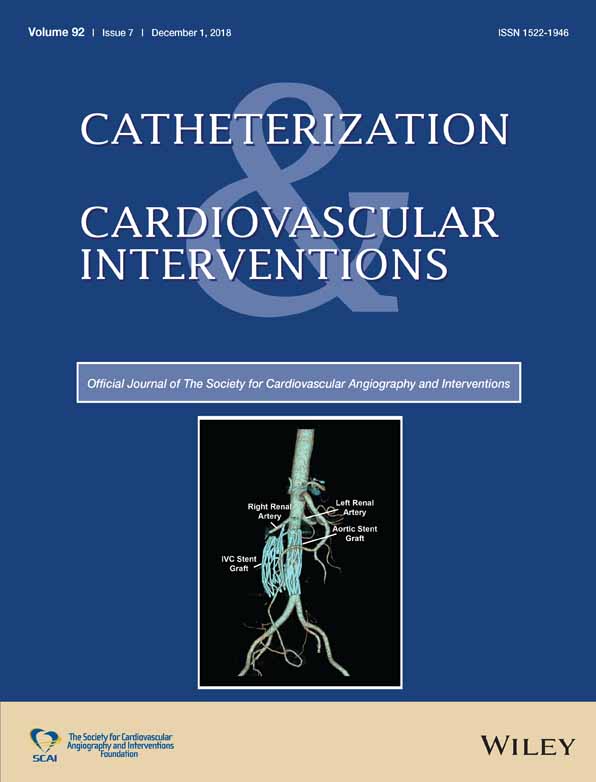Three-dimensional printing assisted transcatheter closure of atrial septal defect with deficient posterior–inferior rim
Funding information: Beijing Natural Science Foundation, Grant/Award Number: 7162160; National Natural Science Foundation of China, Grant/Award Number: 81670283; Beijing Municipal Science & Technology Commission, Grant/Award Number: Z171100001017194
Abstract
Objective
Though successful transcatheter closure has been reported in secundum atrial septal defect (ASD) with deficient posterior–inferior rim, it is still difficult to screen the appropriate candidates. Three-dimensional printing (3DP) makes in vitro trial occlusion possible, and might provide a feasible method in the prediction of successful closure.
Methods
Thirty-five consecutive ASD patients (10M/25F, age, 47.7 ± 11.8 years) with deficient posterior–inferior rim (≤3 mm) were referred for attempted transcatheter closure, and personalized heart model (elastic rubber) was produced based on end-systolic MSCT images. The in vitro measurement and trial occlusion were performed for preoperative evaluation (in vitro successful/unsuccessful group), and the results were compared with postoperative outcomes.
Results
Successful in vitro occlusion was achieved in 30 patients (7M/23F), and the size of ASD was 27.1 ± 4.4 mm. The posterior–inferior rim was 0.95 ± 1.22 mm (rim defect in 17 patients), and 12 patients were associated with aortic rim deficiency. The subsequent transcatheter closure was performed successfully in 29 patients, and the occluder-diameter was identical to that of in vitro occlusion (35.0 ± 4.4 mm). The follow-up (1.4 ± 0.58 years) showed no residual shunt and related-complications. In unsuccessful in vitro group (n = 5), the range of rim deficiency was wider (P = 0.019) and the rim to inferior vena cava was shorter (4.60 ± 2.07 mm vs. 10.71 ± 5.28 mm, P = 0.016). Furthermore, transcatheter closure failed in all patients.
Conclusions
In ASD with deficient posterior–inferior rim, 3DP allows accurate determination of the size and surrounding rims of ASD. Based on personalized heart model, in vitro trial occlusion is an effective method to identify the appropriate candidates for transcatheter closure.
CONFLICT OF INTEREST
None.




